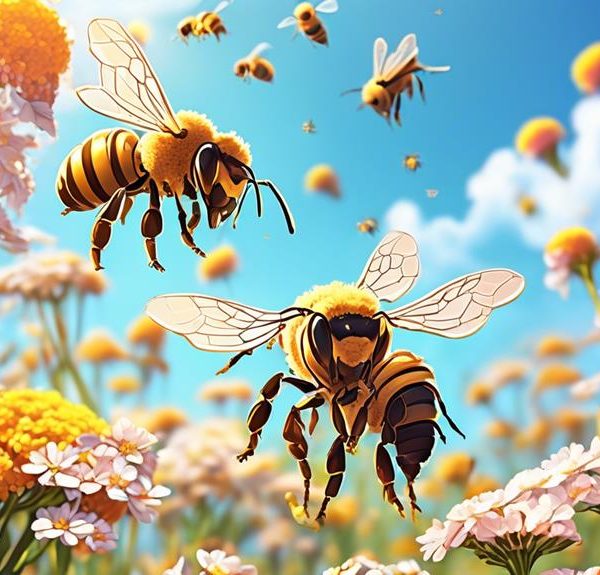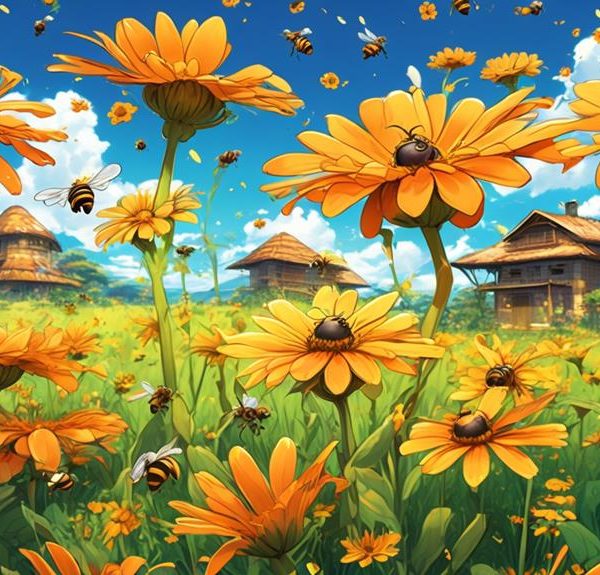Learn about the captivating bond between bees and aconite, an intriguing puzzle of nature that might surprise you.
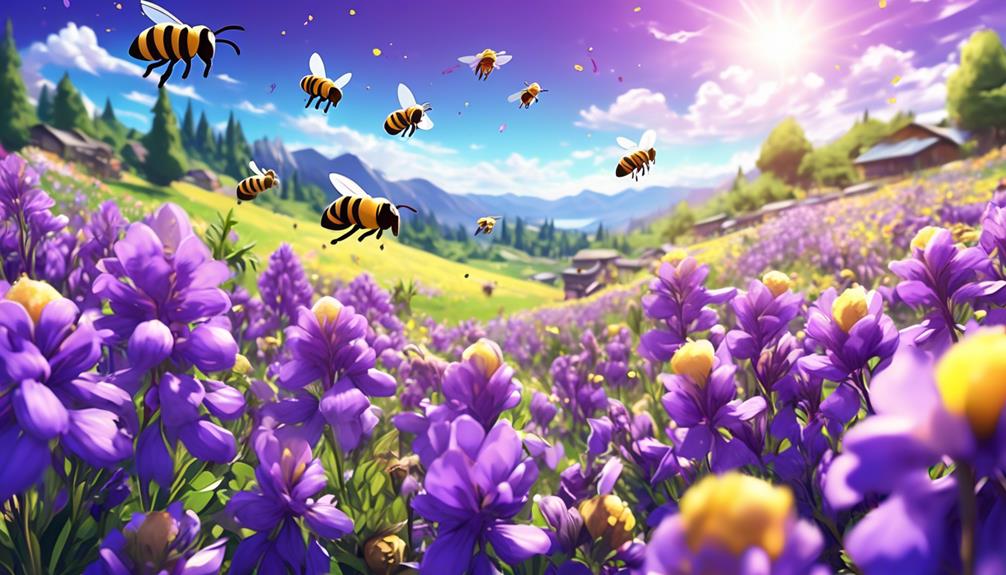
Do Bees Like Aconite?
Like a mystery novel that keeps you on the edge of your seat, the relationship between bees and aconite is a fascinating puzzle you'll want to solve.
You may have seen these vibrant blue flowers in gardens or wild patches, but do you know how they interact with our buzzing friends?
As you explore this topic, you'll unravel intriguing facts about the natural world and the complex interactions within it.
So, prepare yourself for an enlightening journey as we dig into the question: Do bees really fancy aconite?
Key Takeaways
- Aconite, also known as monkshood or wolfsbane, is a poisonous plant native to Western and Central Europe.
- Bees are attracted to aconite due to its rich nectar content, which serves as a potent food source, especially in early spring.
- Bees inadvertently gather pollen on their bodies while feeding on aconite, contributing to the plant's reproduction through pollination.
- The relationship between bees and aconite is vital for both species' survival and highlights the interconnectedness of ecosystems.
Understanding Aconite: An Overview

To truly grasp why bees might be attracted to aconite, you need to understand what aconite is: a poisonous plant, often known as monkshood or wolfsbane, distinguished by its deep blue or yellow helmet-shaped flowers. This plant, belonging to the Ranunculaceae family, is native to Western and Central Europe. Its toxicity is due to the presence of alkaloids, particularly aconitine, which can have powerful effects on the heart and nervous system.
But why would bees be drawn to such a dangerous plant? The answer lies in the nectar. Aconite's nectar, found at the base of its petals, is a rich source of sugars and other nutrients essential for a bee's diet. This nectar also contains toxins, but in low enough concentrations that they don't harm the bees. Instead, these toxins can provide a sort of 'buzz', making the nectar more attractive to bees.
The Role of Bees in Pollination
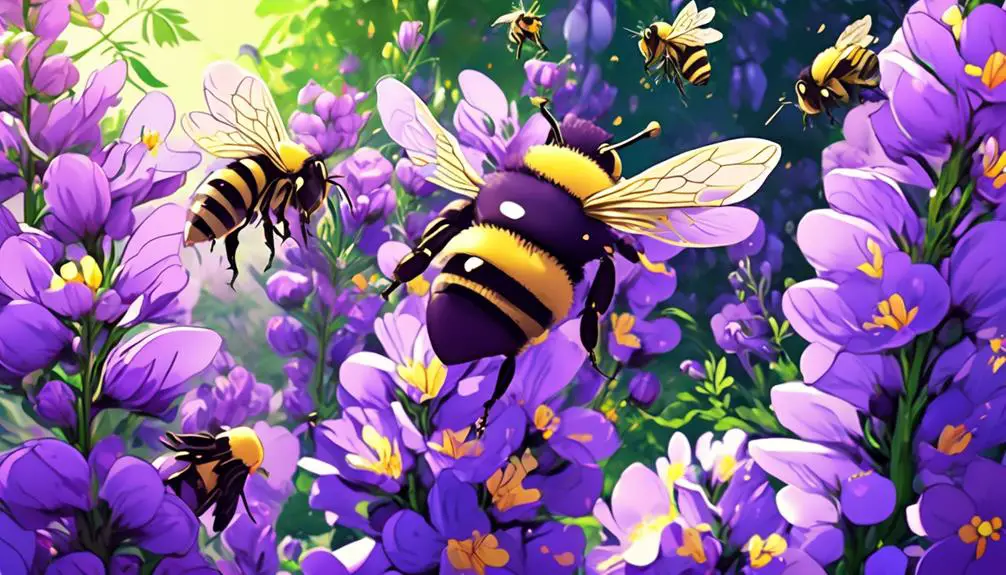
While bees are enticed by the intoxicating nectar of aconite, their interaction with these plants plays a pivotal role in one of nature's most crucial processes: pollination. When a bee alights on a flower to feed, pollen grains stick to its fuzzy body. As it moves from flower to flower, some of these grains rub off onto the female reproductive parts of the next flowers it visits. This is cross-pollination, and it's vital for plant reproduction.
Bees are exceptional pollinators due to their furry bodies and their feeding habits. Worker bees must visit hundreds of flowers each day to collect enough nectar to feed their colony, inadvertently pollinating a significant number of plants in the process.
Their role in pollination isn't just beneficial for the plants, either. Many of the fruits, vegetables, and nuts you eat depend on bee pollination. Without it, these plants would struggle to reproduce, and our diets would be significantly less diverse.
Aconite and Bee Interactions
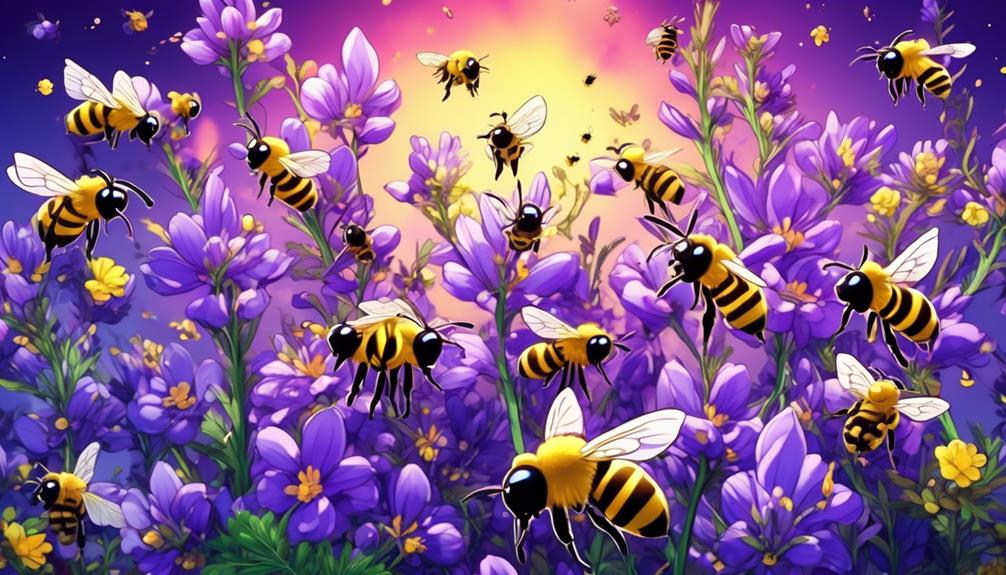
In the unique dance of bees and aconite, you'll find a fascinating example of mutualism in nature, where both parties gain essential benefits. As a bee enthusiast or botanist, the interaction between bees and aconite is a critical point of interest.
The aconite plant, widely recognized for its vibrant blue-purple flowers, appeals to bees with its rich nectar content. This nectar serves as a potent source of food for bees, especially in early spring when other sources are scarce.
As bees hover over the aconite, they inadvertently gather pollen on their bodies. This pollen transfer is essential for the aconite's reproduction. When the bee visits the next aconite flower, the pollen rubs off, fertilizing the new flower and ensuring its future generations.
This intricate interaction is vital for both the survival of the aconite species and the sustenance of the bee population.
Research Findings: Bees and Aconite

Have you ever questioned what scientists have discovered about the relationship between bees and aconite? Recent research has shown that bees are indeed attracted to aconite. This perennial plant, also known as monkshood, is one of the first to bloom in early spring, providing an essential nectar source for bees when other food options are scarce.
Studies show that bees are particularly drawn to aconite due to its vibrant blue color and the high sugar content of its nectar. The bees' affinity for aconite not only benefits their own survival but also aids in the plant's pollination. The pollen attached to the bees' bodies when they feed is transferred to other aconite flowers, facilitating cross-pollination and ensuring the plant's propagation.
However, it's important to note that aconite is highly toxic. Its alkaloid compounds can be harmful to humans and animals if ingested or absorbed through the skin. There's no clear evidence yet on the effects of these toxins on bees, but it's a subject of ongoing research. So, while bees may like aconite, scientists are keen to understand the full implications of this relationship.
Implications for Biodiversity and Ecosystems

Understanding the relationship between bees and aconite offers profound insights into biodiversity and the intricate balance of ecosystems. When you delve into this relationship, you're not just exploring a simple interaction between a plant and an insect. You're investigating the building blocks of life itself.
Bees, as prime pollinators, play a crucial role in ecosystem functioning. They contribute to plant reproduction by transferring pollen from male to female flower parts. Aconite, known for its early bloom, can provide bees with a vital food source when other options are scarce. A decline in bees can hamper aconite pollination, leading to a decrease in plant diversity. Conversely, the absence of aconite may affect bee populations and their ability to survive through early spring.
Furthermore, this dynamic relationship has a ripple effect throughout the ecosystem. Animals that rely on these plants for food or habitat could be impacted. It's a domino effect that underscores the interconnectedness of our natural world.
Frequently Asked Questions
What Other Flowers, Besides Aconite, Are Popular Among Bees?
You're curious about bee-friendly flowers besides aconite. Well, bees particularly love lavender, borage, and sunflowers. They're also fond of herbs like rosemary, thyme, and mint.
In the wild, they're drawn to wildflowers like clover, daisies, and goldenrod. It's all about nectar and pollen – these plants offer plenty in return for bees' pollination services.
How Can I Attract More Bees to My Garden?
To attract more bees to your garden, you'll want to plant a variety of flowers that bloom at different times. Bees love diversity and it keeps them coming back.
Try plants like lavender, clover, and sunflowers. Remember, native plants are always best since they're adapted to your local bee species. Also, avoid using pesticides. They're harmful to bees.
Provide fresh water and consider a bee hotel for solitary bees.
Happy gardening!
Are There Any Risks or Dangers Associated With Bees Being Attracted to Aconite?
Yes, there are risks associated with bees being attracted to Aconite. Aconite, also known as monkshood, is highly toxic. While it's not entirely clear if the toxicity affects bees in the same way it does humans and other animals, it's possible that the bees could transfer the toxin to their honey.
If you're a beekeeper, or just enjoy having bees around, it might be best to avoid planting aconite.
What Are Some Ways to Protect Bees in My Local Area?
You can protect local bees by taking a few simple steps.
First, consider planting native flowers in your garden. Bees are attracted to these flowers and they provide a valuable food source.
Second, try to avoid using pesticides in your garden. These chemicals can be harmful to bees and other pollinators.
Third, provide clean water sources for bees. They need water to drink and for cooling their hives.
In addition, bees love variety. Try to have plants that bloom at different times of the year, so there is always a food source available.
It's also helpful to leave some areas of your garden untidy. Bees often nest in quiet, undisturbed spots.
Finally, consider creating a bee hotel. These structures provide nesting spaces for solitary bees.
How Does Climate Change Affect the Relationship Between Bees and Aconite?
Climate change impacts bees' interaction with aconite significantly. Warmer temperatures cause early blooms, which can throw off bees' pollination schedules. If bees haven't emerged from hibernation when aconite blooms, they'll miss this crucial food source.
Conversely, if it's too cold, aconite mightn't bloom at all, leaving bees with fewer food options. Thus, it's vital you monitor your local climate and adjust your bee-friendly planting accordingly.
Conclusion
You've discovered that bees indeed have a liking for aconite. They play a crucial role in pollinating these plants, contributing to biodiversity and ecosystem health.
Research confirms this interaction, highlighting the importance of protecting both bees and aconite.
Remember, preserving these tiny pollinators and their preferred plants can have a major impact on our environment. So, let's support our buzzing friends and the beautiful aconite they love.

